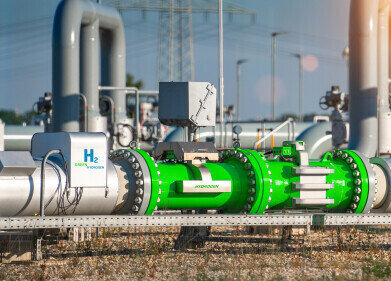Biofuel industry news
Why is Lubricant Quality Tested?
Feb 20 2022
Mechanical lubricants play a critical role in maximising efficiency and minimising downtime. This makes quality testing a top priority for manufacturers and end users. Below are the three main scenarios where lubricant quality testing is carried out:
-
Product manufacturers
Initial lubricant quality tests are performed by manufacturers before products are sold. This includes testing raw materials - including base oils and additives - used to make the lubricant. Finished products are also subject to strict testing protocols before being sold to commercial buyers.
ASTM D2896 to determine basic constituents in petroleum products is a popular method used by lubricant manufacturers. It relies on acidic titration to identify the base numbers of additives, including friction modifiers, corrosion inhibitors, anti-oxidants, dispersants, detergents and pour point depressants. Information is published in product descriptions and helps operators select the right lubricants for different applications.
-
Acceptance testing by end users
End users carry out acceptance testing to ensure a lubricant meets the quality standards promised by the manufacturer. This is important, as low-quality or incorrectly marketed lubricants can jeopardise mechanical performance. For example, an operator may use the ASTM D445 test method to calculate the kinematic viscosity of a lubricant and ensure it matches the number promised by the manufacturer.
Similarly, an end user may follow the ASTM D5182 method to determine the scuffing load capacity of a lubricant. This test is designed to determine the abrasive wear and friction control properties of lubricating oils, a trait often prioritised by mechanical operators.
-
Circulation testing
Quality tests are carried out on circulating lubricants to determine how a machine is performing and if any issues need to be addressed. For example, detecting traces of metallic contaminants in a circulating lubricant could indicate early wear on mechanical parts. Equally, quality tests on circulating oils could be used to detect issues with a filtration system used to purify air sent into an underground mine site, or a fluid pump used to power a hydraulic drilling system.
Global oil giant Shell manufactures a variety of LubeAnalyst test kits designed to help operators detect potential issues in bearing and circulating systems before they result in mechanical failure.
“Continually monitoring the condition of oil inside your equipment can provide an early-warning of impending failures empowering you to stop potential failures in their tracks. It can also help determine appropriate oil-drain intervals, and help extend equipment life,” reads the Shell website.
The billion dollar future of the lubricants market
The lubricants market is a huge industry, with Fortune Business Insights predicting the value of the sector will hit US$133.55 billion by 2028. Find out more about lubricants and how they’re used across a wide range of industries and applications in ‘A Complete Guide to Lubricants - Types, Quality & Testing.’
Digital Edition
PIN 26.1 Feb/Mar 2025
March 2025
Analytical Instrumentation - Elemental Analysis for Quality and Process Control at Refineries, for Lubricants and Wear Metals in Engine Oils - Synthetic Lubricants: New Developments - Scaling...
View all digital editions
Events
Apr 08 2025 Birmingham, UK
Apr 08 2025 Kielce, Poland
Apr 08 2025 Ravenna, Italy
Apr 08 2025 Southampton, UK
Apr 08 2025 London, UK
.jpg)


















